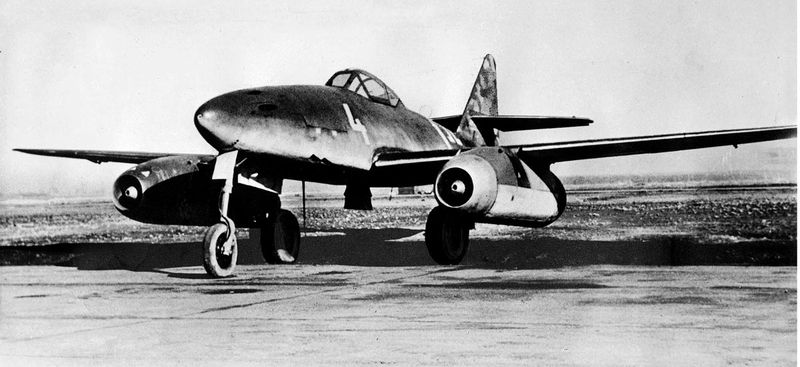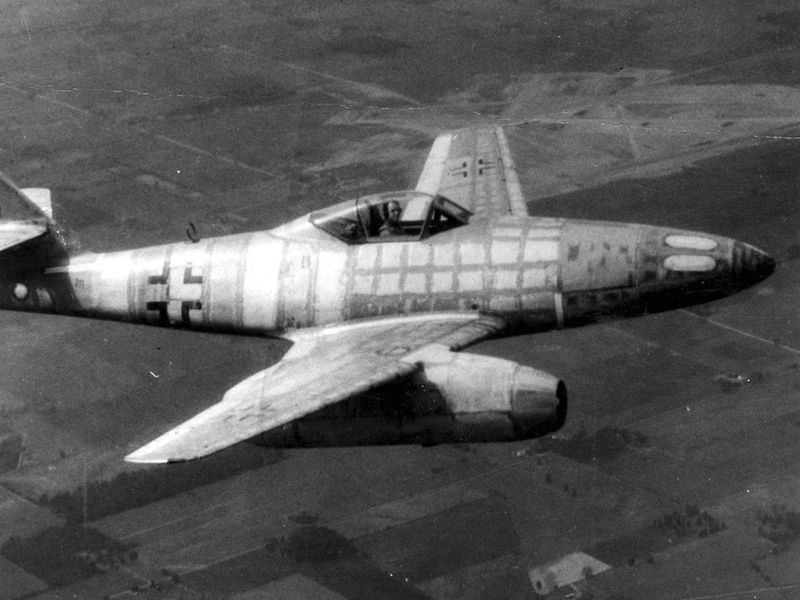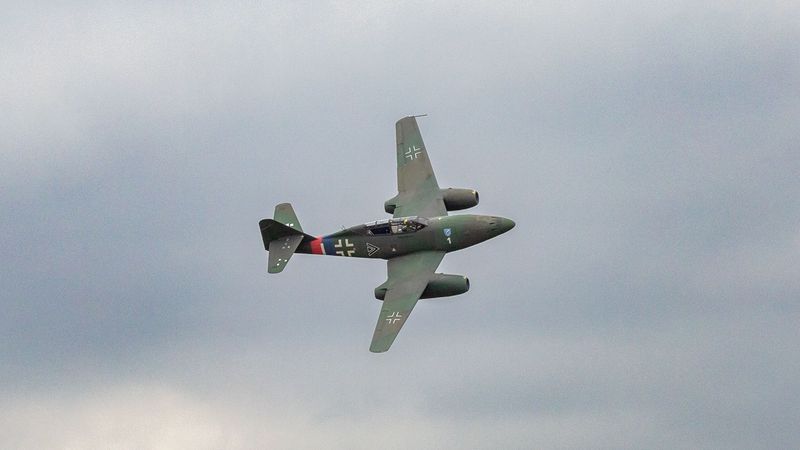The Messerschmitt Me-262 wasn’t just another fighter—it was the world’s first operational jet-powered combat aircraft, and it had the potential to rewrite the skies of World War II. But behind its sleek silhouette were secrets, delays, and missed chances that could’ve flipped the outcome of the war. Here are 7 lesser-known facts about the Me-262 that, if handled differently, might have changed everything.
1. It Could Outrun Everything
The Me-262 was a marvel of speed, reaching over 540 mph and leaving Allied planes in its vapor trails. During test flights, pilots marveled at its unprecedented velocity, likening it to breaking the sound barrier of its time.
Most Allied fighters couldn’t catch it, let alone engage in combat. This speed advantage was a game-changer that, if leveraged earlier, could have dominated the air war over Europe.
Strategists believed that mass deployment in 1943 might have curbed Allied air superiority, altering the trajectory of many battles. It was a missed opportunity of historic proportions.
2. It Was Ready Too Early—for Hitler’s Comfort
In 1942, the Me-262 prototype was nearly ready to take to the skies, but it faced an unexpected hurdle: Adolf Hitler. He ordered modifications to convert it into a fighter-bomber, a role unsuited for its design.
This decision caused significant delays, diverting resources and time crucial in wartime production. Historians argue that if the aircraft had been deployed in its original fighter configuration earlier, the air war could have seen a different outcome.
Hitler’s insistence on its conversion illustrated how strategic missteps can tip the scales of warfare, emphasizing the delicate balance of power.
3. It Had Revolutionary Cannons
Armed with four 30mm MK 108 cannons, the Me-262 packed a punch that was unmatched by its contemporaries. Pilots noted its ability to tear through Allied bombers with a single, devastating burst.
Test flights demonstrated its firepower, with B-17s falling like paper targets to its deadly accuracy. This capability could have turned the tide in the Luftwaffe’s favor.
Despite its power, the jet required skilled handling; inexperienced pilots often struggled. Had it been effectively mass-produced and piloted by seasoned veterans, it might have crippled Allied bombing campaigns.
4. Jet Engines Were Powerful—But Fragile
The twin Junkers Jumo 004 engines were the heart of the Me-262, offering unparalleled speed but also demanding respect. Pilots were trained to handle them with care, as sudden throttle changes risked catastrophic failures.
With a lifespan of just 10 to 25 flight hours, they required meticulous maintenance to remain operational. Many sorties were cut short due to engine malfunctions, a technical limitation that plagued the jet’s potential.
Despite these issues, the engines represented a significant leap in aviation technology, hinting at the future of aerial combat, though fragile in their infancy.
5. Allied Pilots Were Ordered to Avoid Head-On Attacks
The Me-262’s nose was a fearsome sight, prompting Allied commands to warn pilots against head-on engagements. Its destructive nose cannons posed a grave risk, leading to strategic adjustments in combat scenarios.
Allied forces adapted by targeting the Me-262 during takeoff and landing phases, capitalizing on its vulnerability when speed was diminished. This tactical shift highlighted the cat-and-mouse nature of aerial warfare.
The fear of its armament underscored the innovative yet intimidating presence the Me-262 held in the skies, marking it as a formidable opponent despite its vulnerabilities.
6. Pilots Needed Elite-Level Training
The transition to jet propulsion required a profound shift in pilot training. Unlike propeller-driven planes, the Me-262 demanded precision and foresight, traits only a few possessed without rigorous training.
Unfortunately, many Luftwaffe pilots were thrust into the cockpit with limited understanding, unable to exploit the jet’s full capabilities. Skilled aviators, however, turned the Me-262 into an instrument of war.
This disparity in training often resulted in catastrophic mishaps. Adequate preparation could have maximized its impact, transforming fledgling pilots into formidable adversaries with the potential to tip battle scales.
7. A Full Squadron Could Have Decimated Allied Bombing Campaigns
Imagine a sky filled with Me-262s, their presence a harbinger of doom for Allied bombers. Experts speculate that if deployed en masse in 1943, these jets could have severely disrupted Allied strategic bombing efforts.
Such a force might have delayed critical operations like D-Day, altering the course of the war on the Western Front. The potential was there, yet unrealized, due to production and strategic limitations.
This speculative scenario illustrates the thin line between victory and defeat, hinging on decisions made in the war rooms far from the battlefield. History, in this case, was written by those choices.







